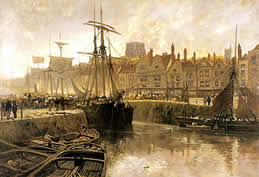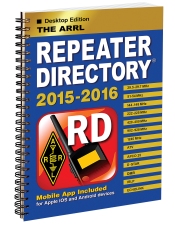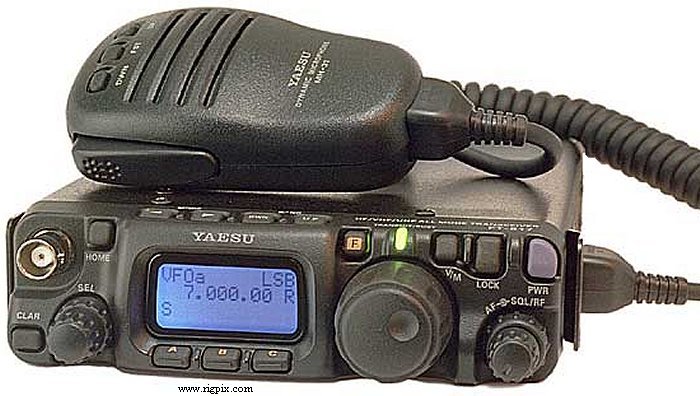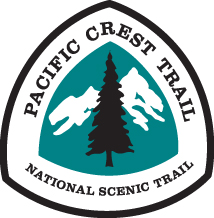We had had a fair amount of rain over the preceding few days in north-eastern Kansas. The rain prevented me from doing more work outside with the trailer than I should have been doing. I say “we” because for this part of the trip, the interior of the truck consisted of myself (the driver) and my two daughters (a soon to be 1st grader and 4th grader).
Today, the day of departure, there were lots of delays. Many “to dos” left until the last minute and one significant (and unexpected) problem.
I put together a 4 place bike rack together, mounted it on a large piece of 3/4″ particle board and dropped it in the back of the truck. It worked great. I placed all the bikes in. They fit snug and did not require any additional bracing or tie downs.
I backed the truck up and connected it to the trailer. Hooked up the weight distribution hitch and electrical connection. I disconnected the shore power. Once inside the trailer, I turned on a light… and nothing happen.
A major crisis ensued when I discovered that the newly installed batteries (two 6v golf cart batteries) were not providing power to the trailer.
I started troubleshooting. The power across the batteries was a bit over 12v. My initial thought that the batteries were dead was not the case. I had a spare 12v deep cycle battery which I hooked up – that didn’t work. I checked the fuses in the fuse box inside the trailer. All the fuses were good.
Into the house to find the trailer’s manual. I found nothing helpful in the manual.
I knew the problem was between the battery and the trailer. I tried to trace the cables going from the battery. I got underneath the trailer and found an in-line fuse on the 12v cable going to the trailer! Nothing about that in the manual. And the fuse was blown. I had a pile of spare fuses in the storage area in the back of the trailer underneath the bunk beads (which we call Davy Jones Locker). I found a replacement fuse and everything was good to go.
There was last minute packing. The organizational level of what was placed inside the trailer was minimal. Again, waiting until the last minute to get everything packed made the departure much more stressful than it had to be.
Once on the road, it was a fairly smooth trip up to Sioux Falls, South Dakota. A fair amount of rain on the drive until I made it north of St. Joseph, MO. Straight north, up I-29. The first significant traffic I hit was around Sioux City (due to construction and probably commute time as well). After I cleared the traffic, it was up to Sioux Falls, SD – our destination for the day. We arrived about 6:30pm… maybe a bit later.
About 360 miles for the day. I arrived later than I would like and drove a bit further than I would have generally preferred. However, I knew I would probably as fresh as I was going to be on the first day. I also wanted to get up to I-90 and set for our push west.
We stayed at Jellystone in Sioux Falls. It was our first stay at a Jellystone campground. Jellystones are kind of a mini-theme park campground featuring Yogi the Bear. They also have lots of extra activities for kids beyond their awesome swimming pool. If my girls had their way, we would have stayed there longer than just one night.
Dinner was not much of a success. By this time I was very tired and didn’t have much energy left to bring my A-game. After a mediocre dinner and time for the girls to swim in the pool, we went to bed.
Then my oldest daughter started feeling upset to her stomach. Fortunately we had put together a very complete “pharmacy bag”. I had three types of anti-nausea treatments and it ended up helping.

 Last week the Tundra got a make over. Besides the normal oil change, tire rotation, and alignment I had the drive belt replaced, repairs made to the front axle seal, a CV boot, the top brake light, and one of the license plate lights. The brakes are good. The vibration in the driver’s side mirror is fixed. The Tundra is up to 111k miles but is still going strong.
Last week the Tundra got a make over. Besides the normal oil change, tire rotation, and alignment I had the drive belt replaced, repairs made to the front axle seal, a CV boot, the top brake light, and one of the license plate lights. The brakes are good. The vibration in the driver’s side mirror is fixed. The Tundra is up to 111k miles but is still going strong.






 My current assignment at Fort Leavenworth has me traveling quite a bit. My intent has been to bring a rig with me and have some casual QSOs while on the road. My success has been mixed. I would mostly attribute this to either a lack of planning on my part or being in a stuck in a hotel room with zero antenna opportunities.
My current assignment at Fort Leavenworth has me traveling quite a bit. My intent has been to bring a rig with me and have some casual QSOs while on the road. My success has been mixed. I would mostly attribute this to either a lack of planning on my part or being in a stuck in a hotel room with zero antenna opportunities.  Now for a rig… I think the Elecraft KX3 would be ideal for a
Now for a rig… I think the Elecraft KX3 would be ideal for a 

 The first is Ed,
The first is Ed,  Ed’s an advocate of pedestrian mobile (WA3WSJ/pm) and has
Ed’s an advocate of pedestrian mobile (WA3WSJ/pm) and has  Heading west, the next major trail is the
Heading west, the next major trail is the  Further west is the
Further west is the 






